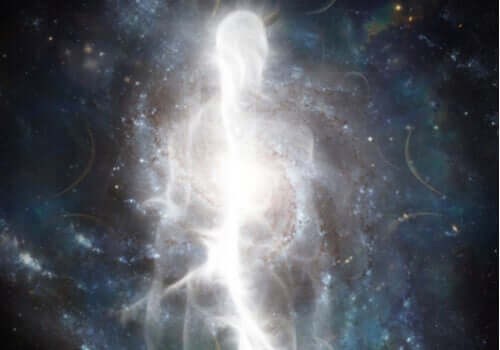The soul has long been a mystery, and there are many hypotheses about it, and various academic disciplines continue to try to explain it. In this article we will discuss what the scientific community has to say on the subject.
Next, we’ll take a tour of the current scientific paradigm, tradition, and challenges, and talk about Robert Lanza’s fascinating theory of biocentrism.
- Our path will go beyond the spiritual.
- As you know.
- Many religions mention the existence of the soul.
- But what is the position of science in this regard.
- How do you address this problem today?Read on to find out.
The idea of the existence of the soul is associated with beliefs about life after death, this idea of the soul is linked to the conviction of eternal life, in addition, many people also believe that the soul is a guide through which they think and feel. and that works independently of the body.
Certainly, the conception of the soul varies depending on the context, religion, and discipline that comes close to it. Throughout history, it is mainly religions, because they are linked to the spiritual dimension, that have taken the lead in explaining their existence.
Religions argue that, regardless of their connection to the spiritual, proof of the existence of the soul is among the mysteries associated with birth, death, different states of consciousness, memory and imagination. So, they suggest that the soul is a kind of life force, an impulse.
According to the philosopher and scientific historian Thomas Kuhn, a scientific paradigm is all these achievements that are universally recognized. In addition to generating models of solutions and problems in the scientific community, paradigms are criticized.
The current scientific paradigm generally does not recognize the spiritual dimension, but indicates that there is no need for a soul, it even tends to explain life through equations about carbon activity and protein activity, etc.
On the one hand, religion responds to the existence of the soul from a spiritual point of view, asociating it with the transcendent and the intangible; on the other hand, when science conceives it, it associates it with matter, that is, science understands it as synonymous with mind, reducing it to the concept of cognition and consciousness.
Neuroscience has made great strides in explaining how the human nervous system works and trying to explain the reason behind subjective experiments; however, this remains a mystery. Therefore, the problem of the existence or not of the soul is related to the understanding of the nature of the self.
Today, different theories have begun to challenge the scientific paradigm. Physicochemistry, first and foremostic. An example of this is biocentrism, which focuses on difficult questions about human nature and wonders, for example, whether the soul exists or if there is anything beyond time.
This new perspective on being, the cosmos and reality believes that life goes beyond atoms and particles, this would explain things like quantum entanglement and the principle of uncertainty, some authors even point out that quantum strangeness occurs in the world on a human scale. what Gerlich et al (2011) suggests in his article Quantum Interference of Large Organic Molecules
Robert Lanza, an American scientist, suggested the theory of biocentrism, in this theory he considers that life and biology are essential to being, reality and the cosmos, even claiming that consciousness creates the universe and not the other way around. Therefore, it does not ignore the physical-chemical approach of explaining what is at stake in being, but attaches greater importance to the biological approach.
For other levels of scientific knowledge, space and time are tools of the mind and associate the soul with existence. This challenge takes us away from classical intuition and suggests that part of the mind or soul is immortal and exists outside these categories.
In short, certain parts of science recognize the soul, either because they associate it with poetic vision or because they reduce it to knowledge; others continue with the traditional vision of denying it, while some current theories begin to think about its existence through new discoveries. that explain the nature of being associated with time and space.

